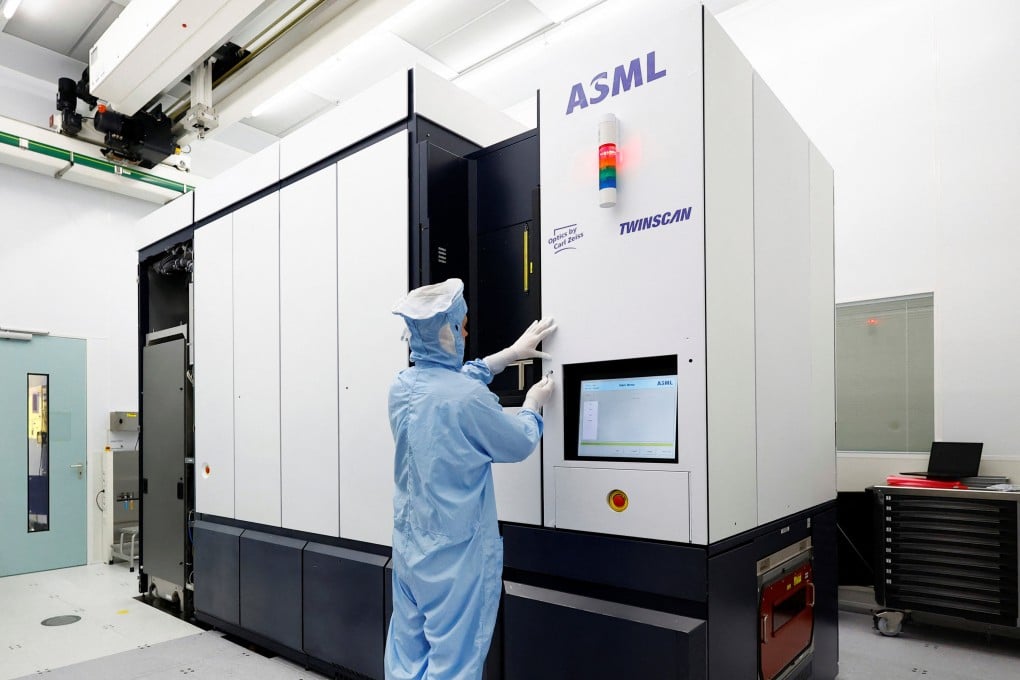Updated US export controls could cover ASML’s workhorse machine, dealing China’s chip ambitions a heavy blow
- Updated US controls have seen lithography equipment capable of making chips on a 45-nm node or less added to the list of controlled items
- ASML, which makes the world’s leading lithography machines, says it is seeking more clarification from Washington

Updated US export controls on China-bound chip-making tools are expansive, covering a wide range of front-end equipment that could threaten the country’s mature semiconductor production, analysts say.
In a 121-page document published by the US Bureau of Industry and Security on Wednesday, lithography equipment capable of making chips on a 45-nanometre node or less were added to the list of controlled items, along with advanced tools for etching and film deposition.
ASML’s 1980Di was launched by the Dutch firm in 2015 and enables chip production at 40-nm and below, capable of making 275 wafers per hour. Designed to accommodate “mix and match” use with extreme ultraviolet (EUV) lithography, it has become an industry workhorse for many Chinese fabs in both advanced and mature semiconductor manufacturing.
“In principle, the 1980Di would fall under the [latest] export control restrictions,” said ASML CEO Peter Wennink during the call. “But only when [they] are used for advanced semiconductor manufacturing.”
Wennink said the new US restrictions will only apply to a handful of Chinese fabs involved in advanced semiconductor manufacturing, and will exclude the vast majority of its Chinese customers.